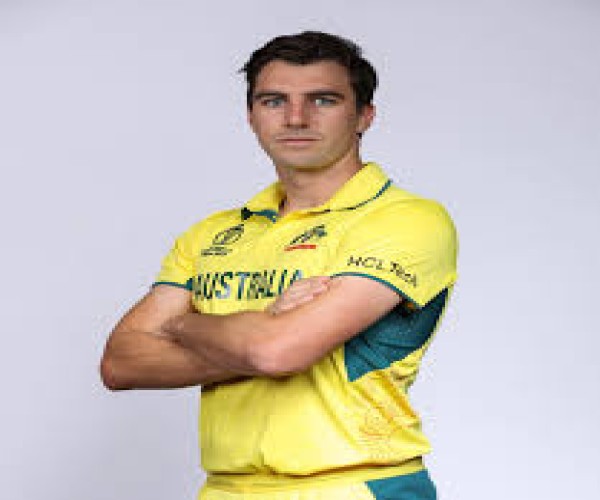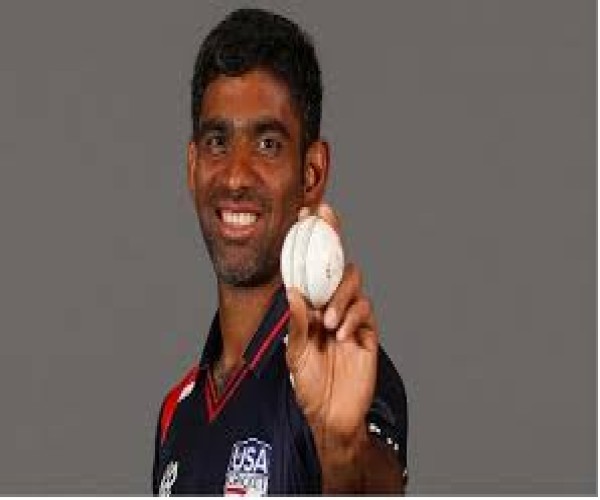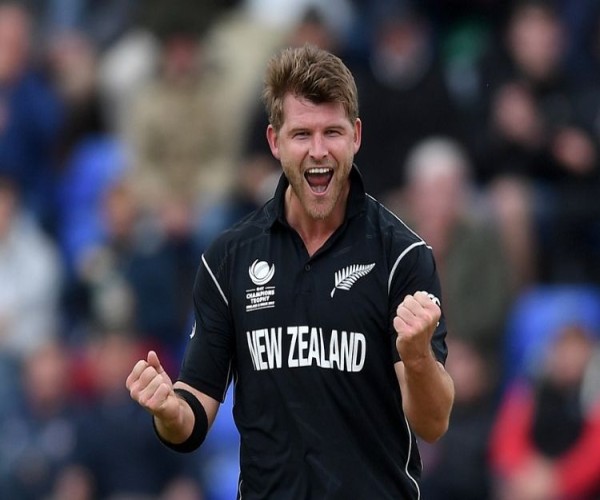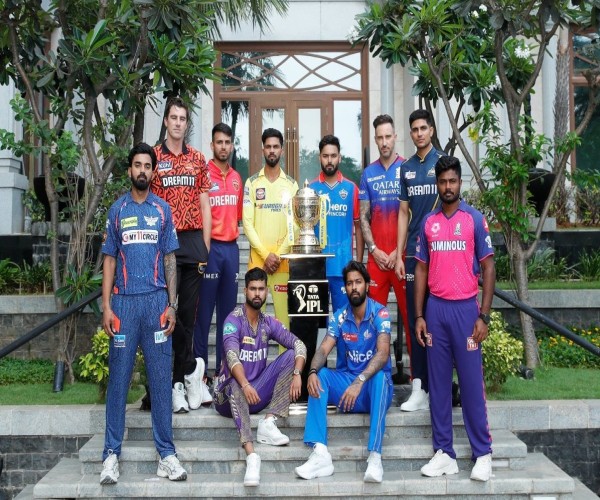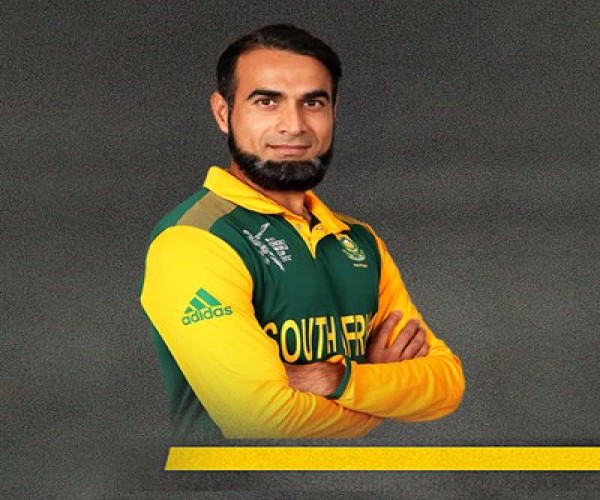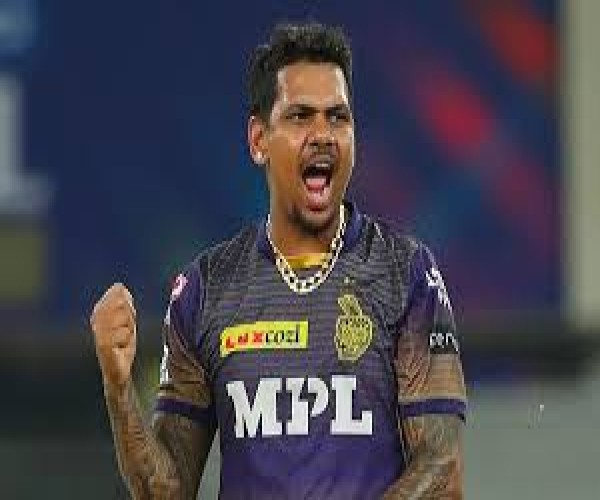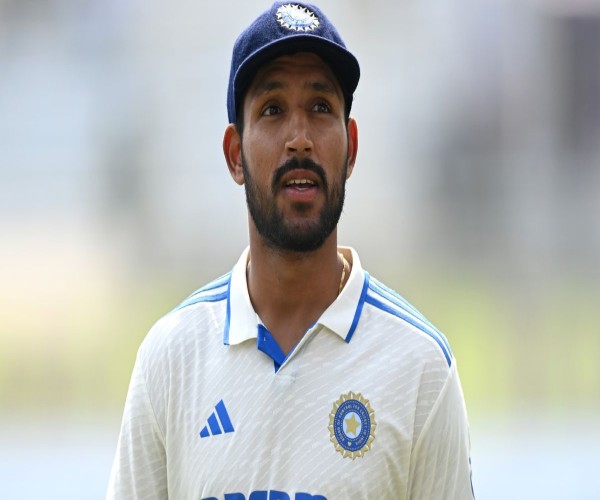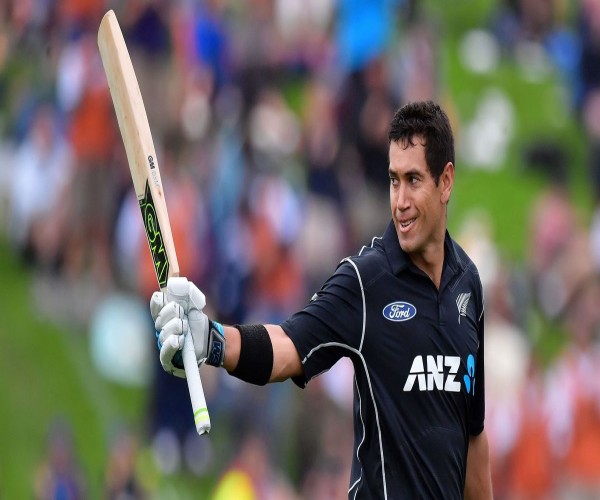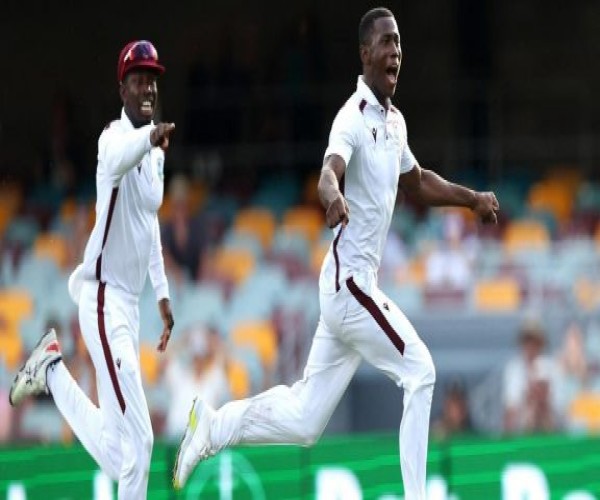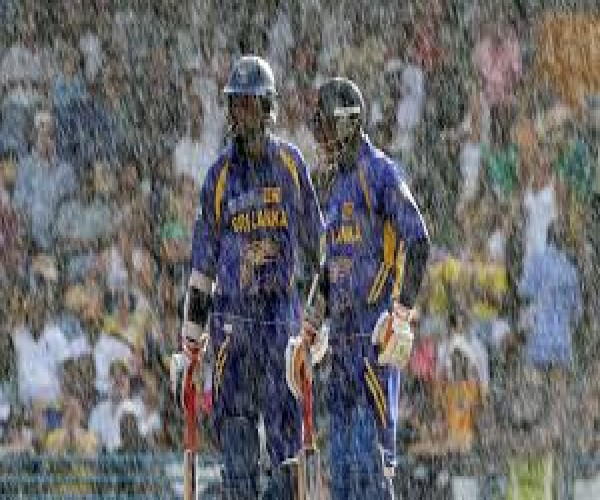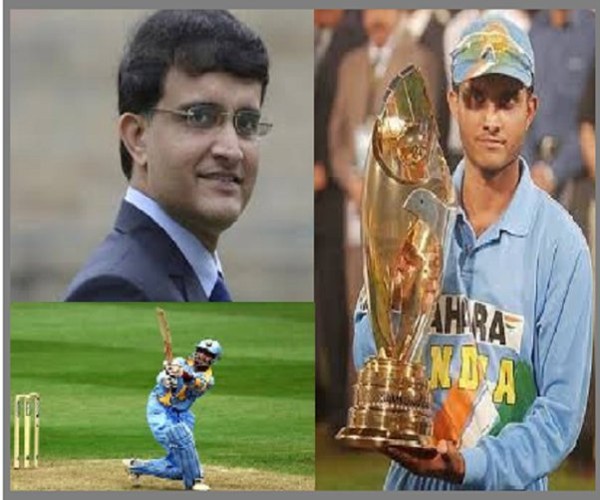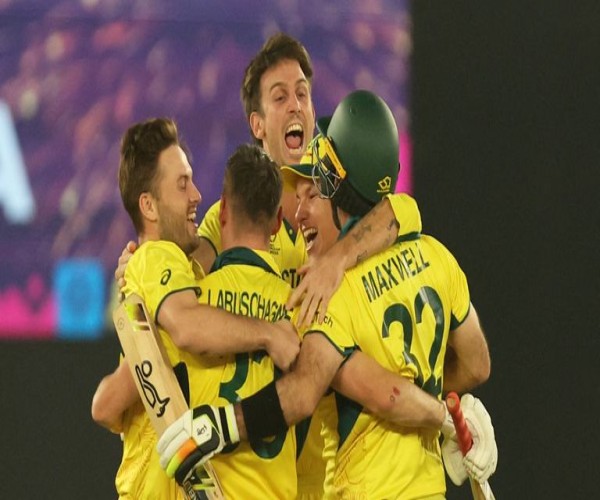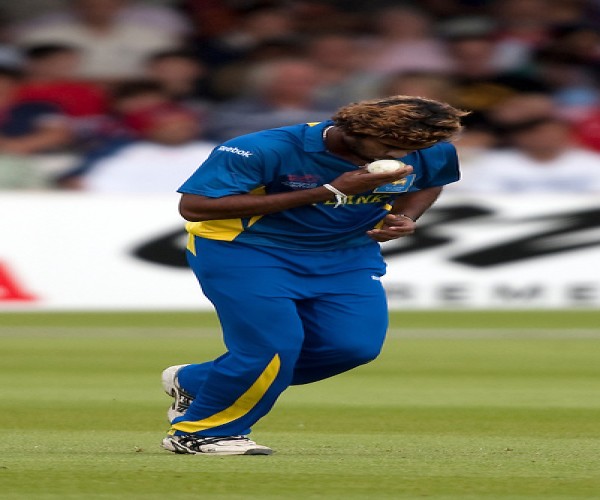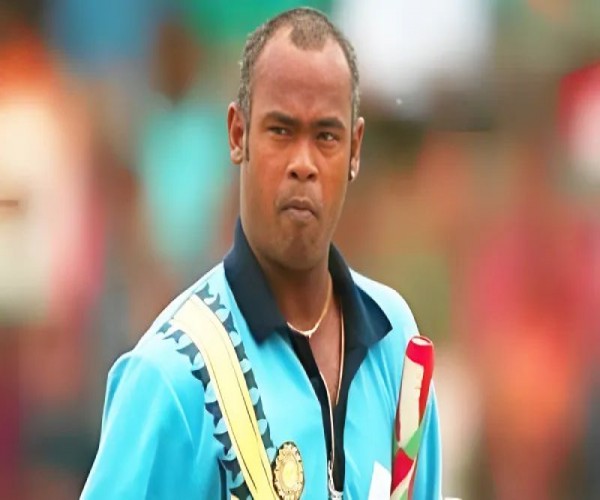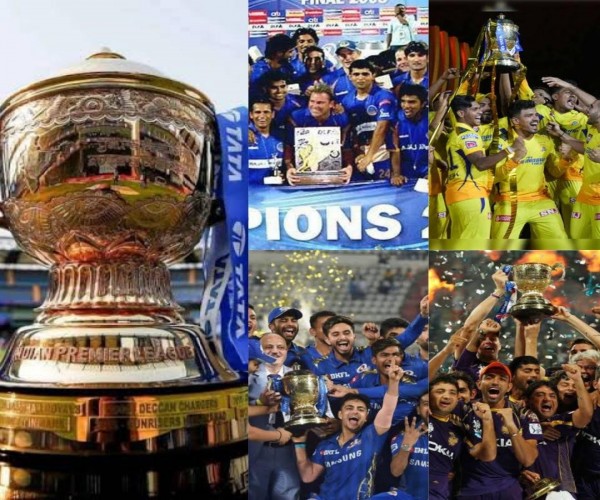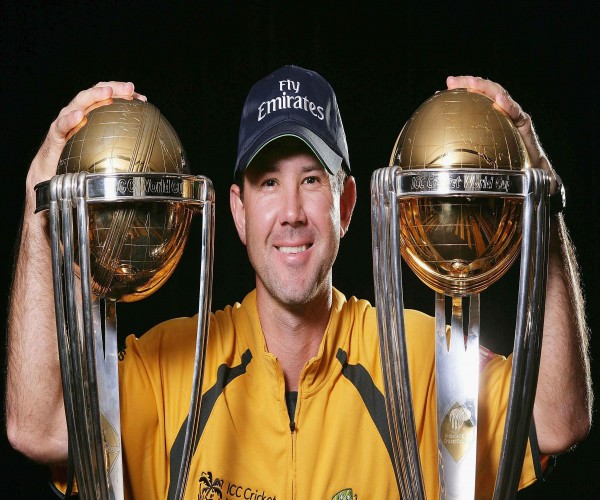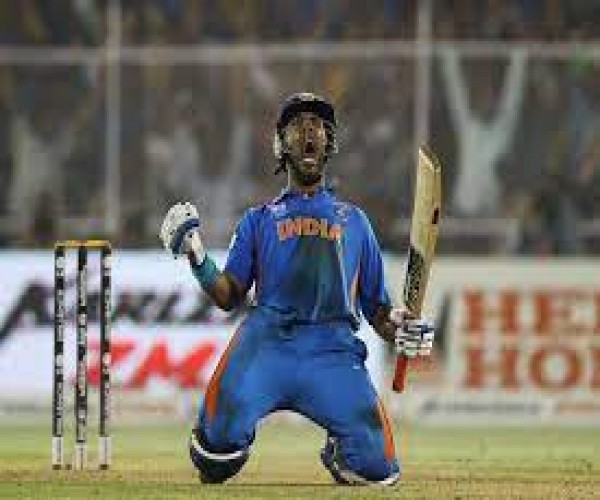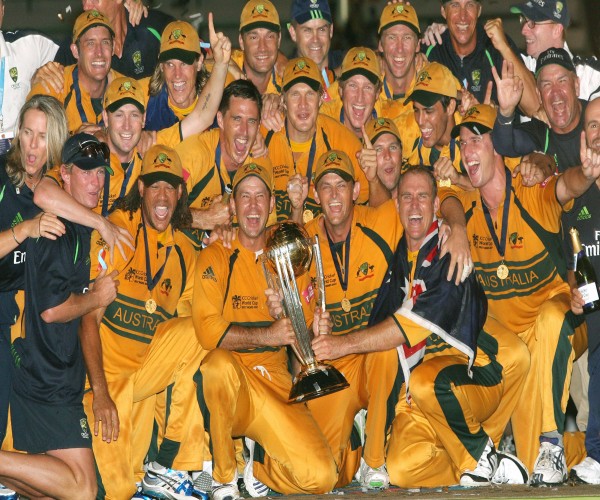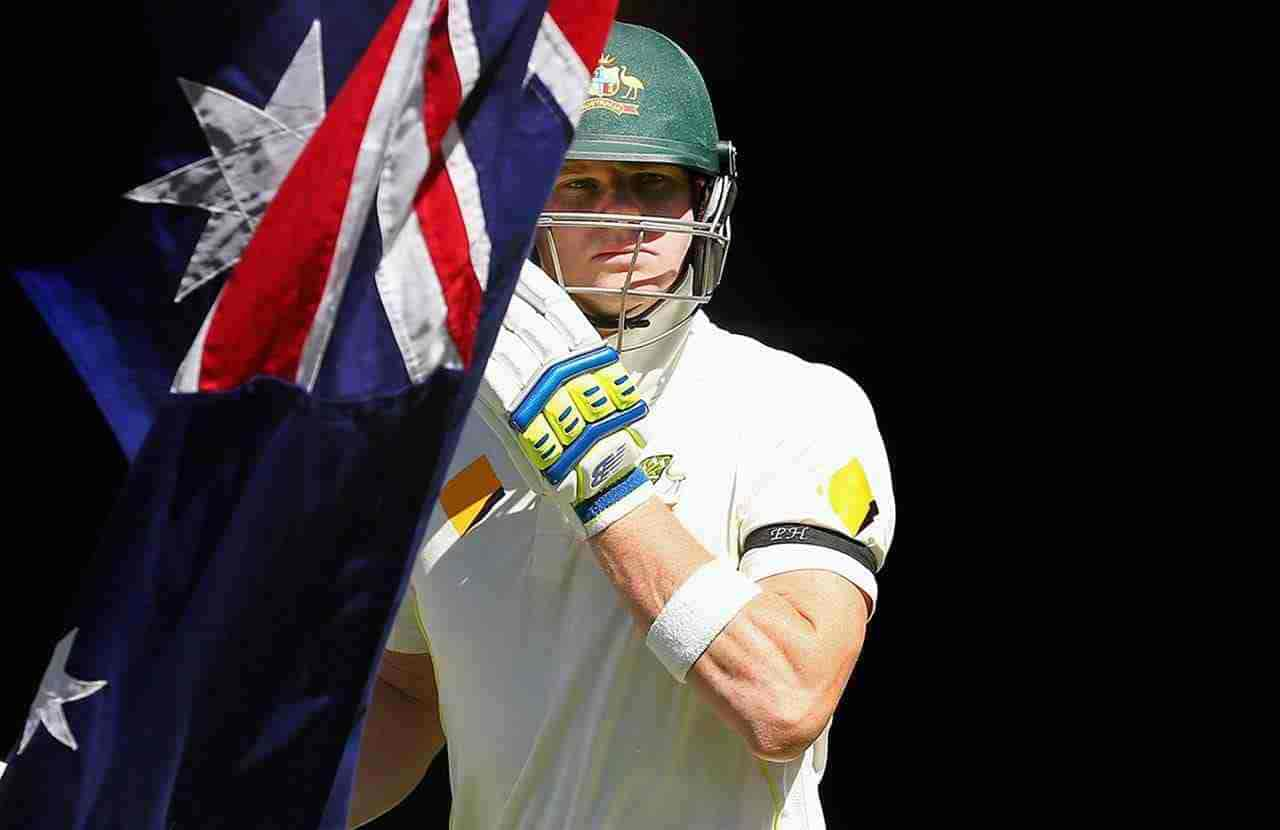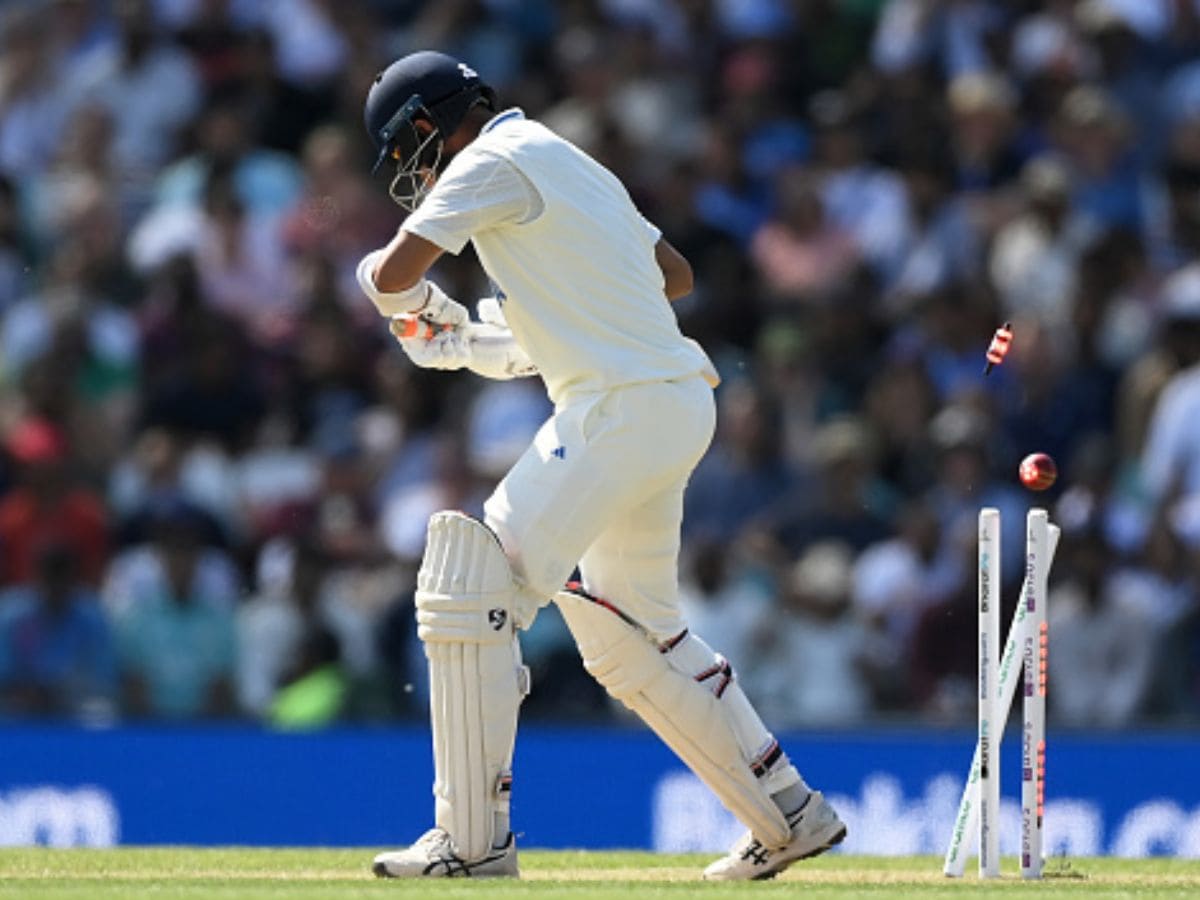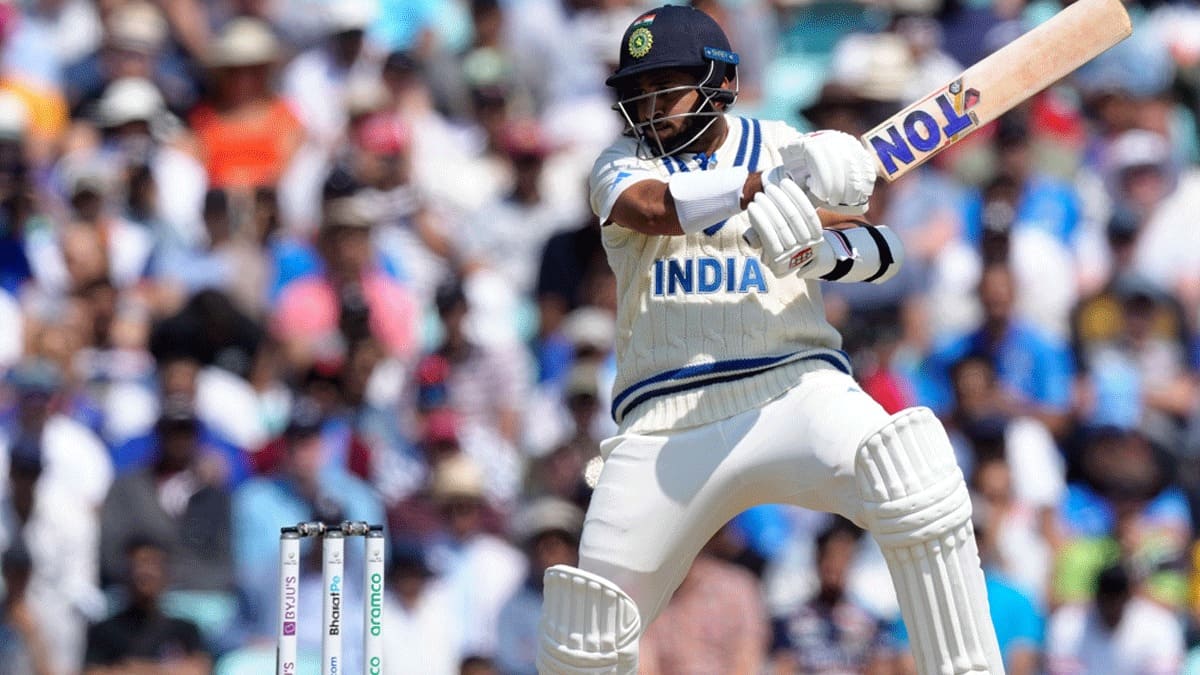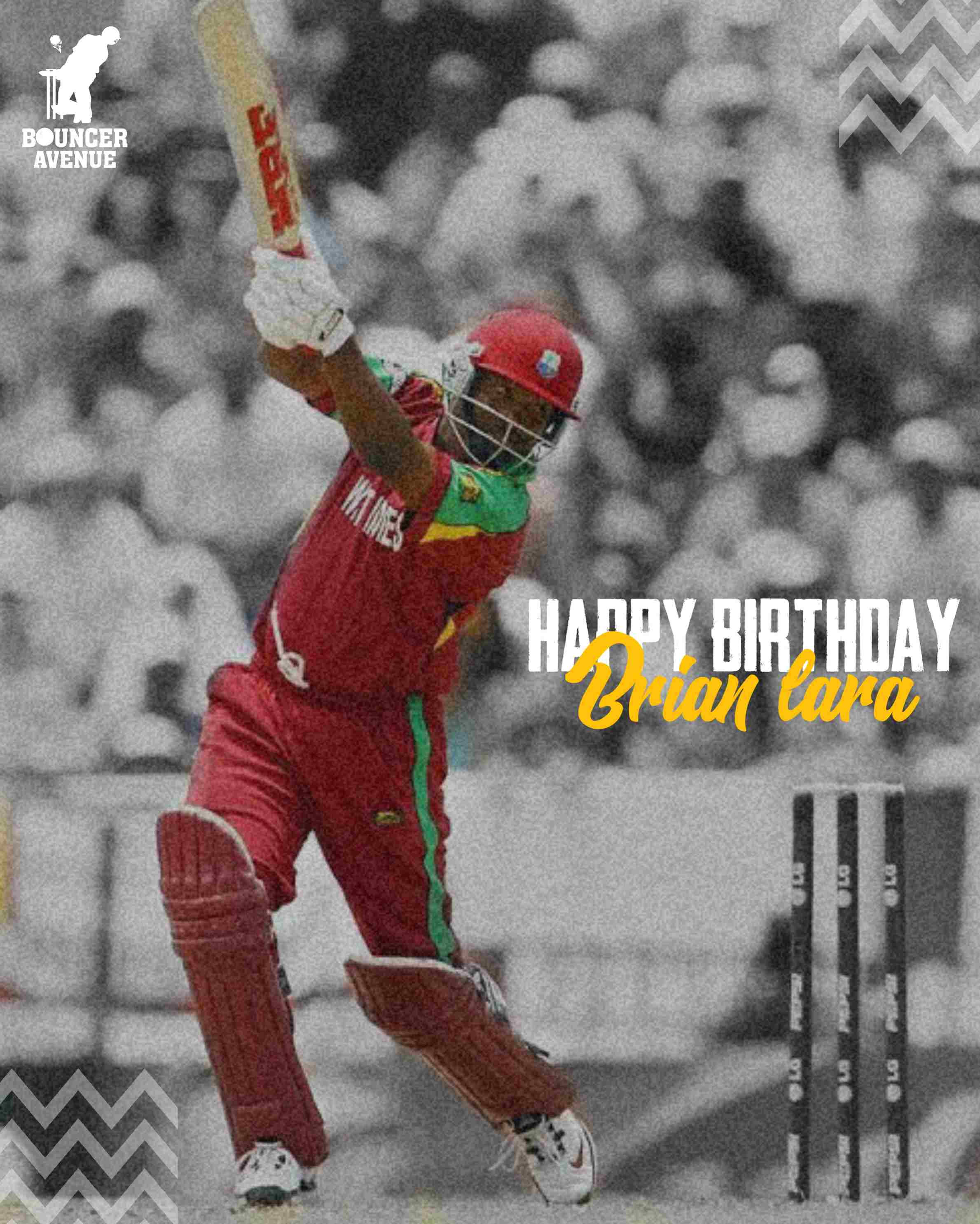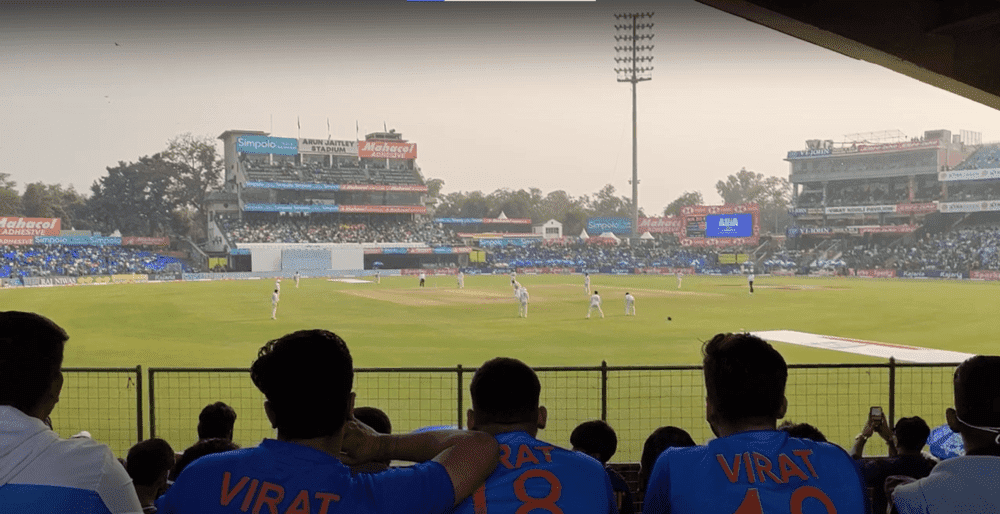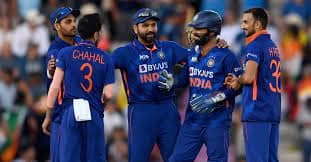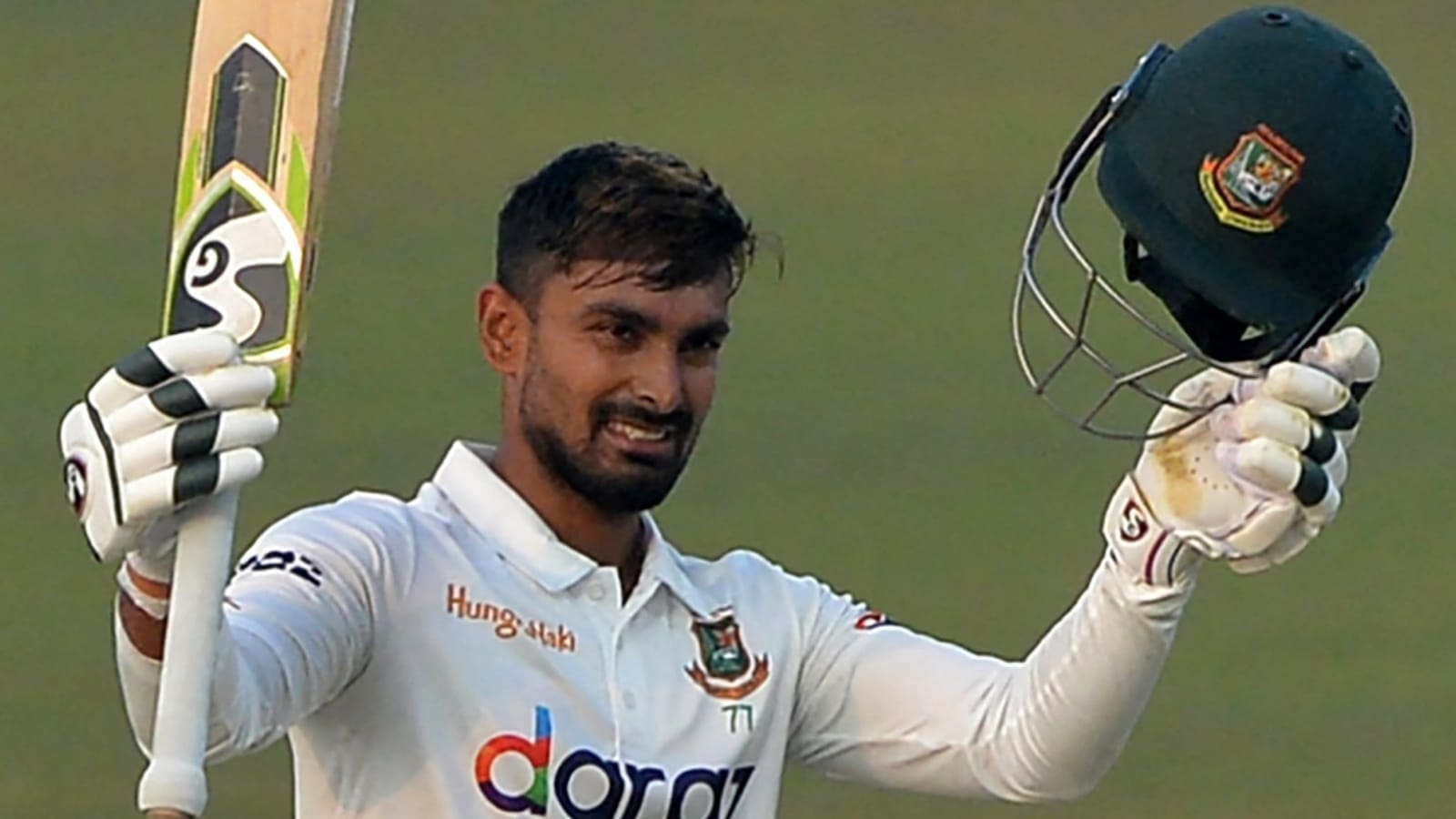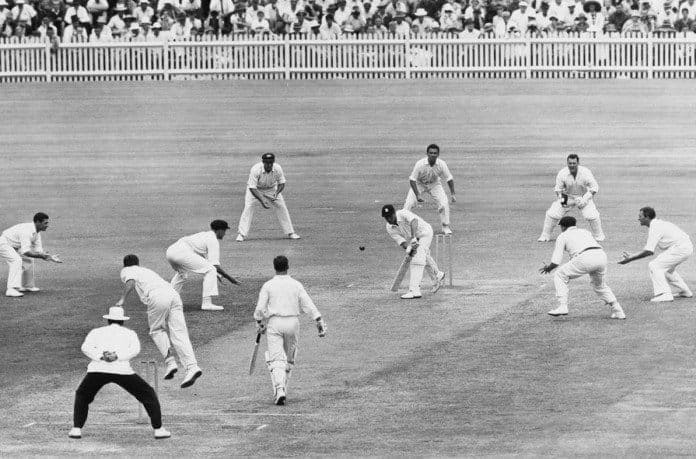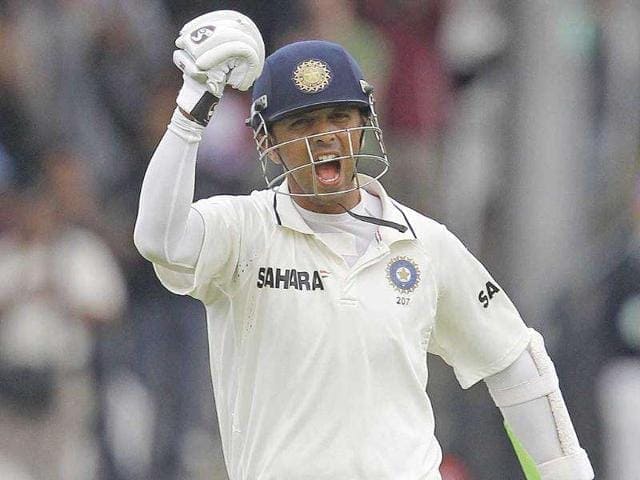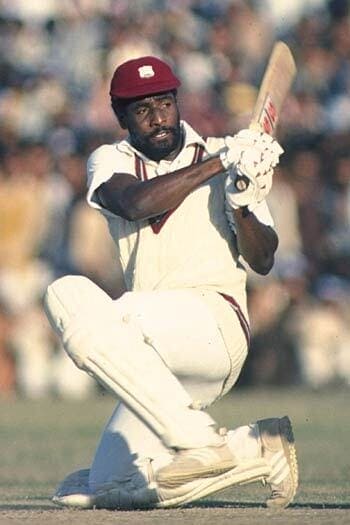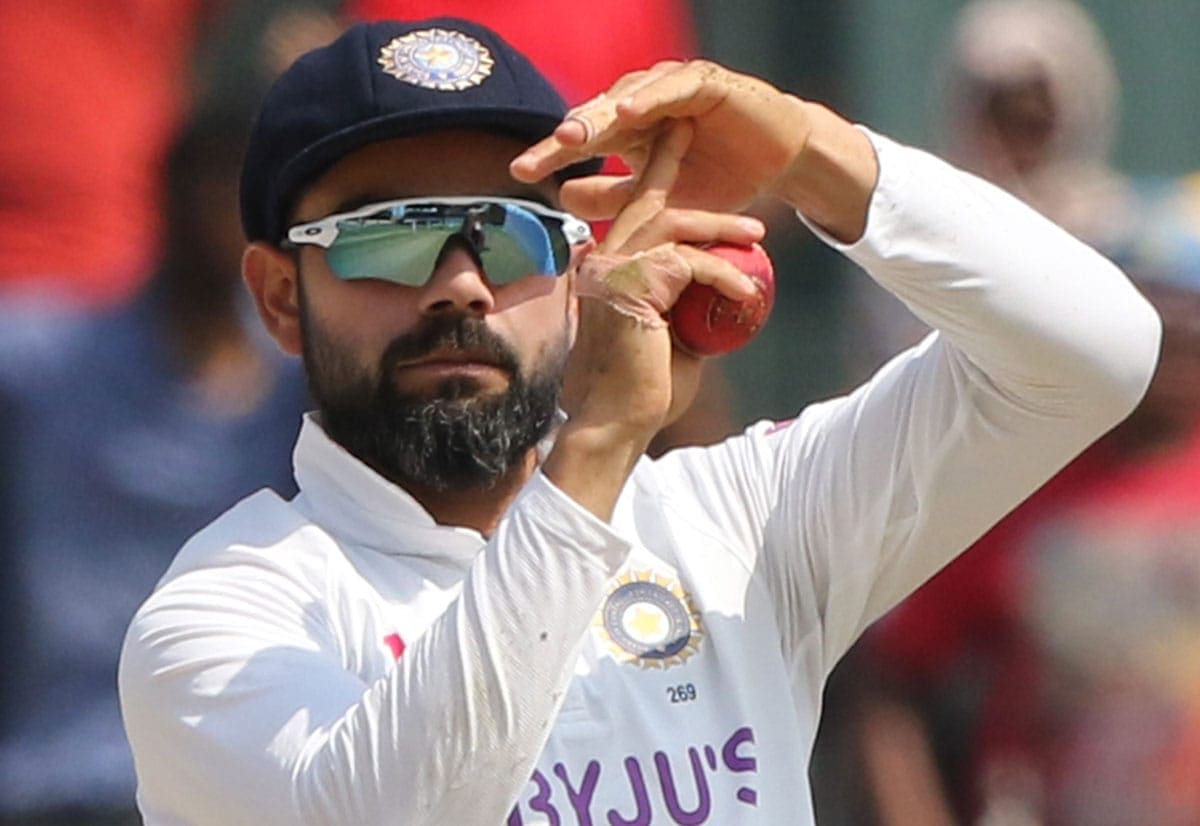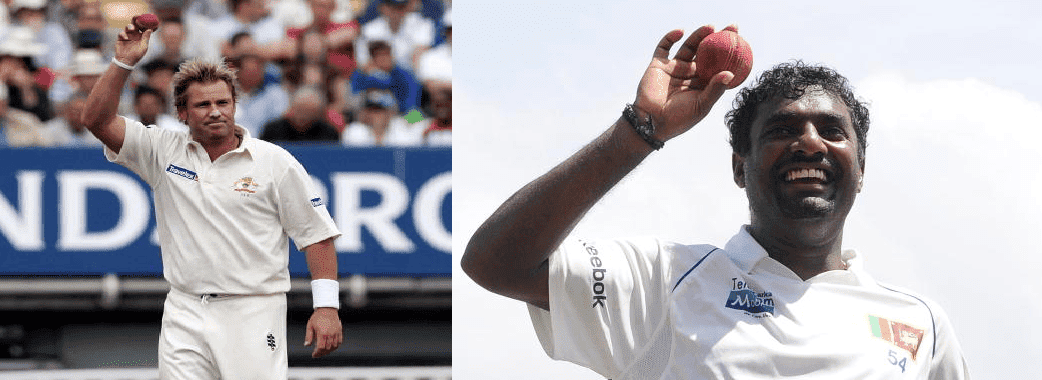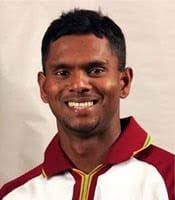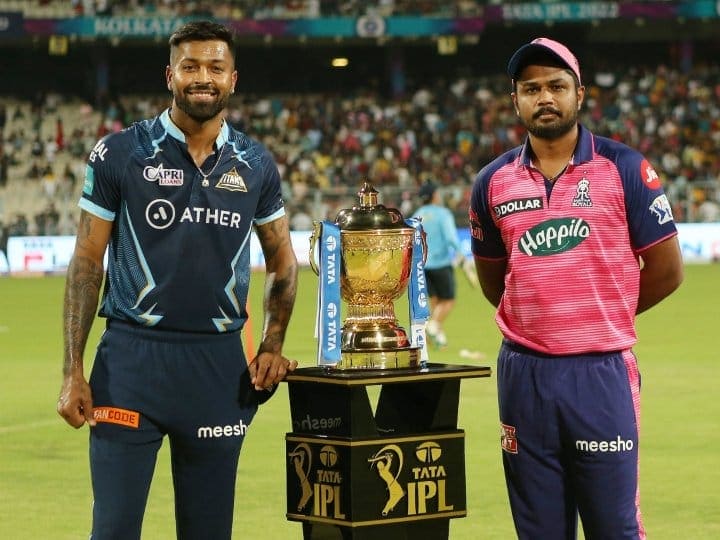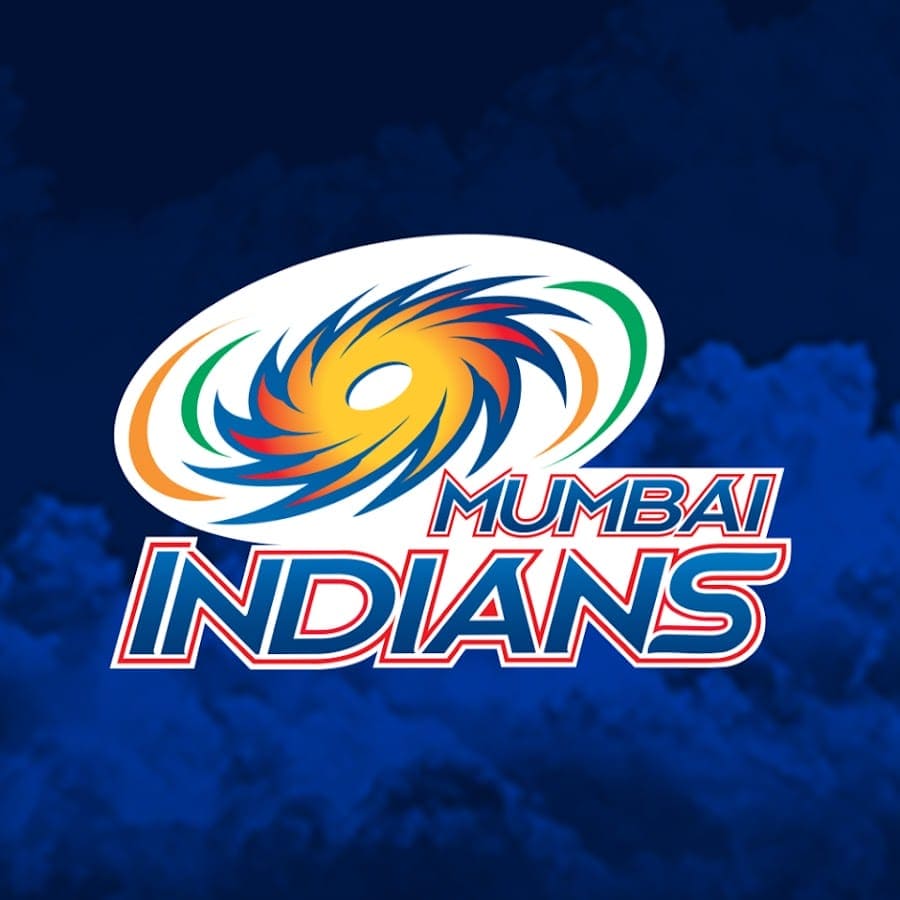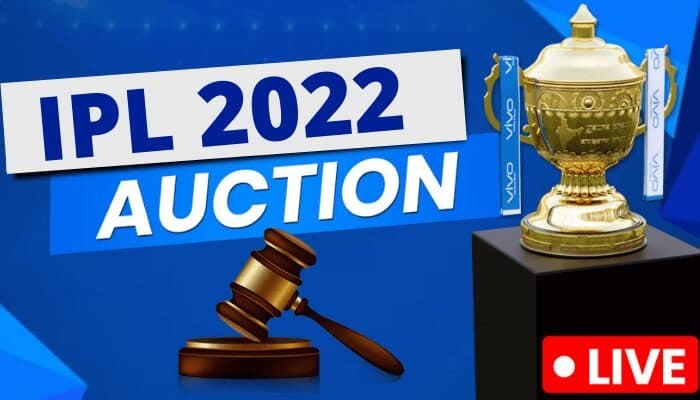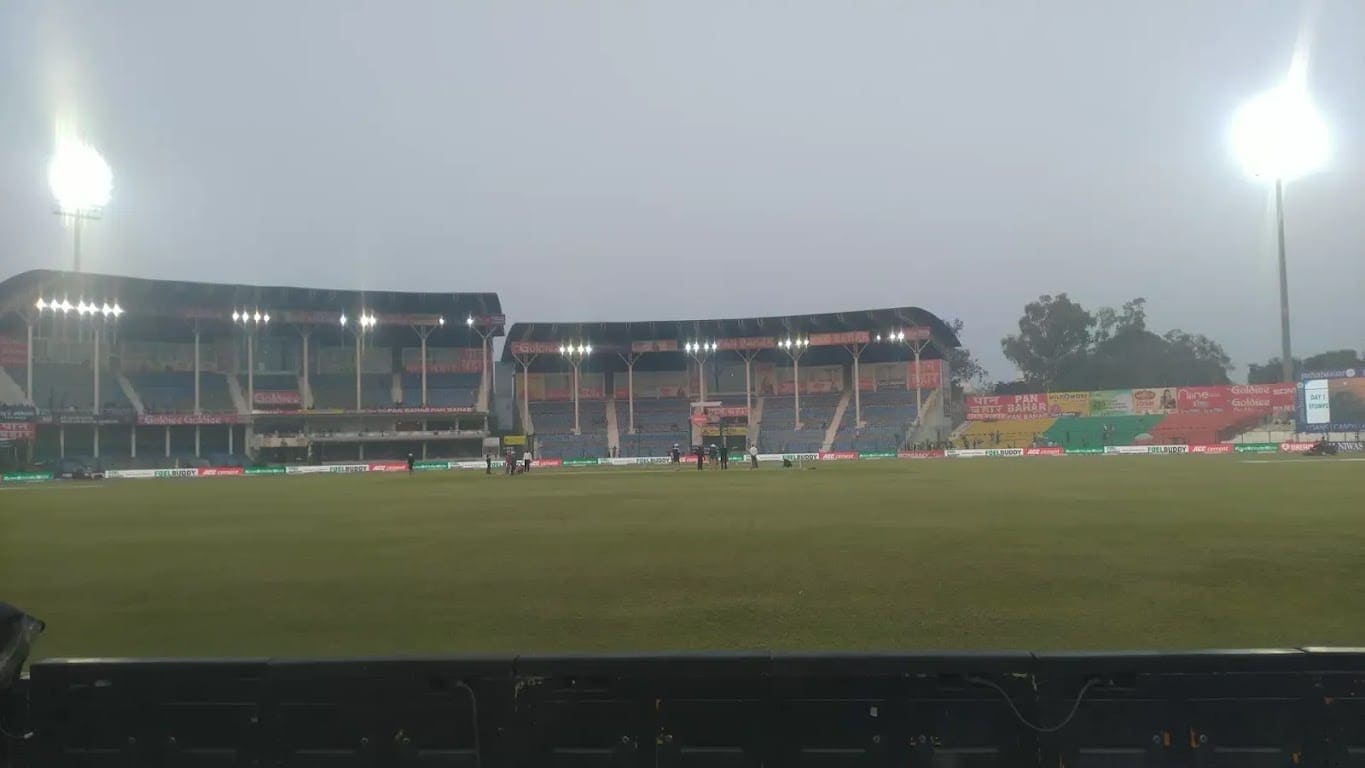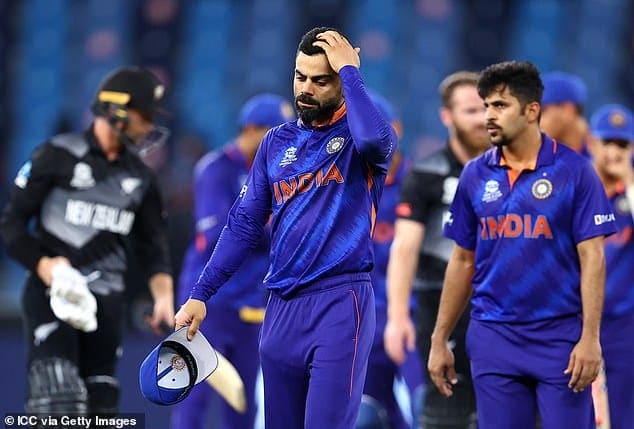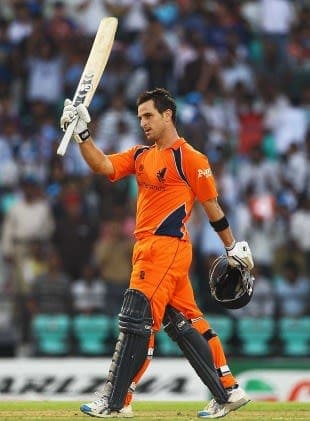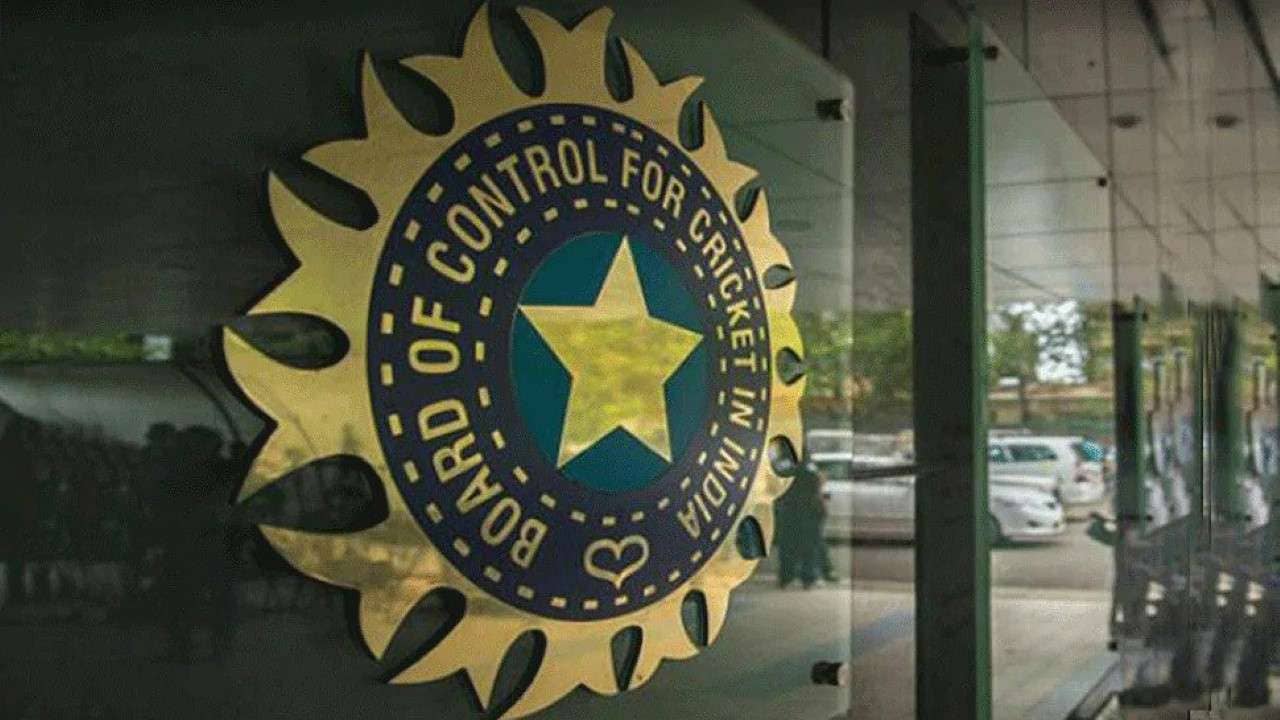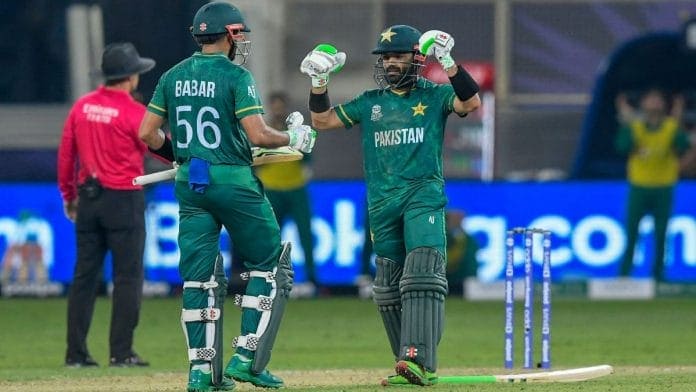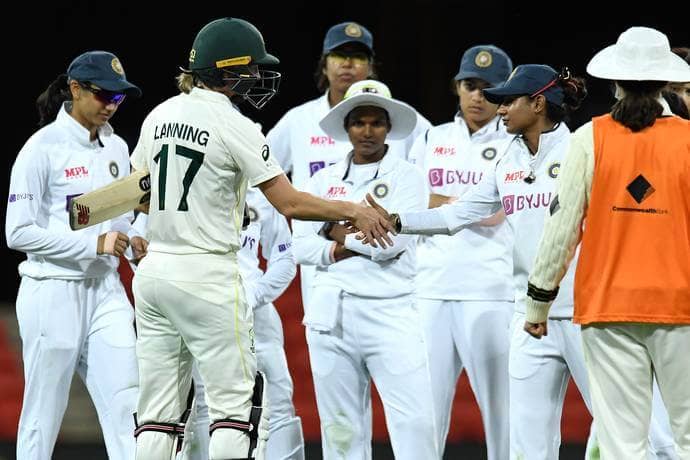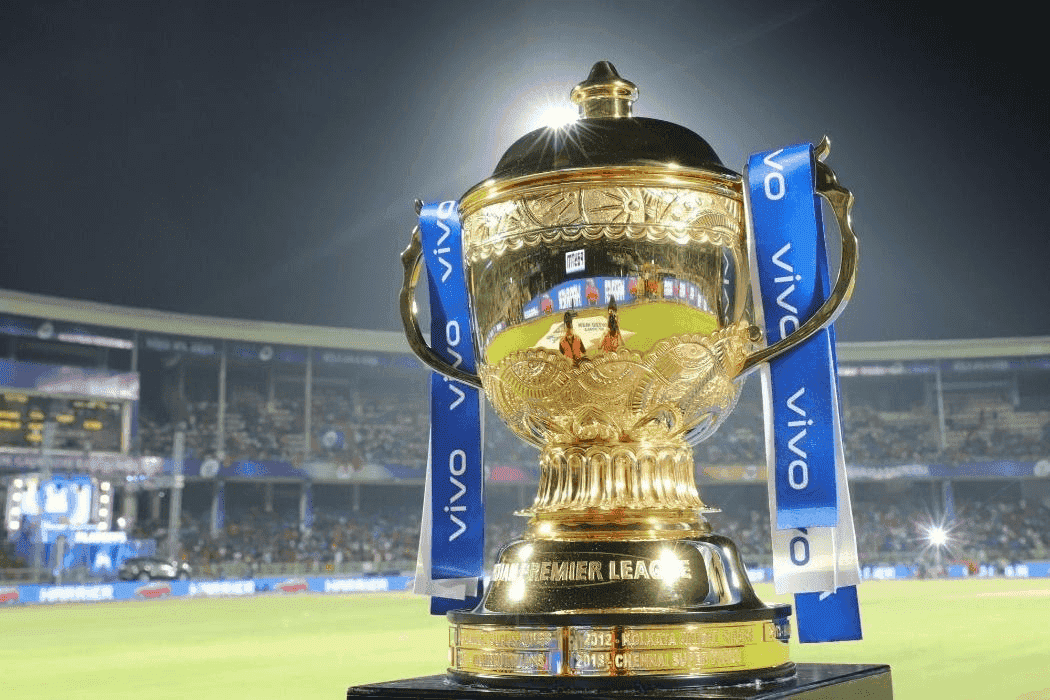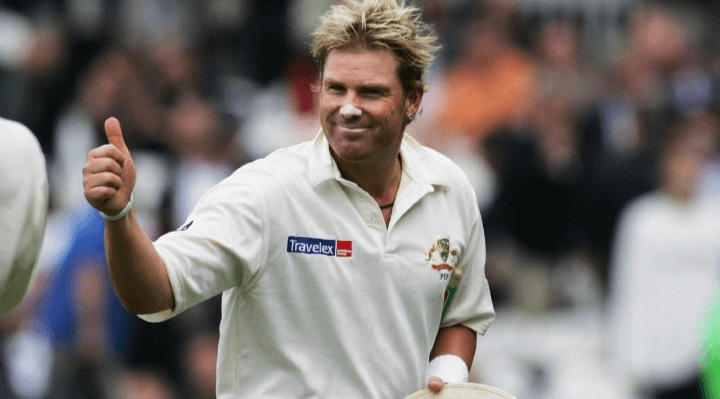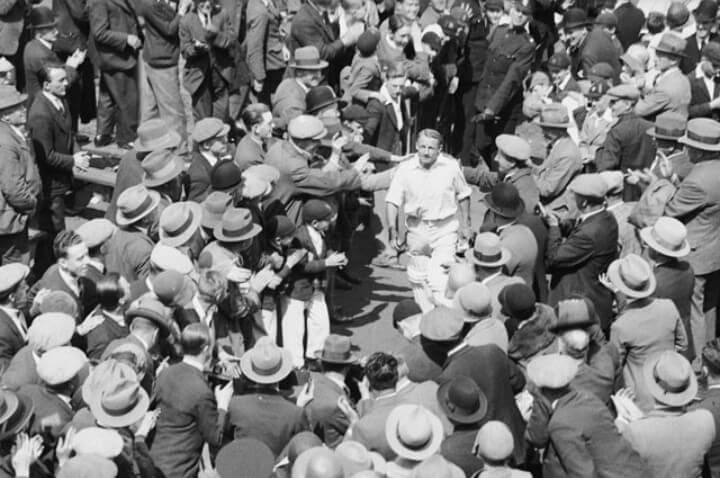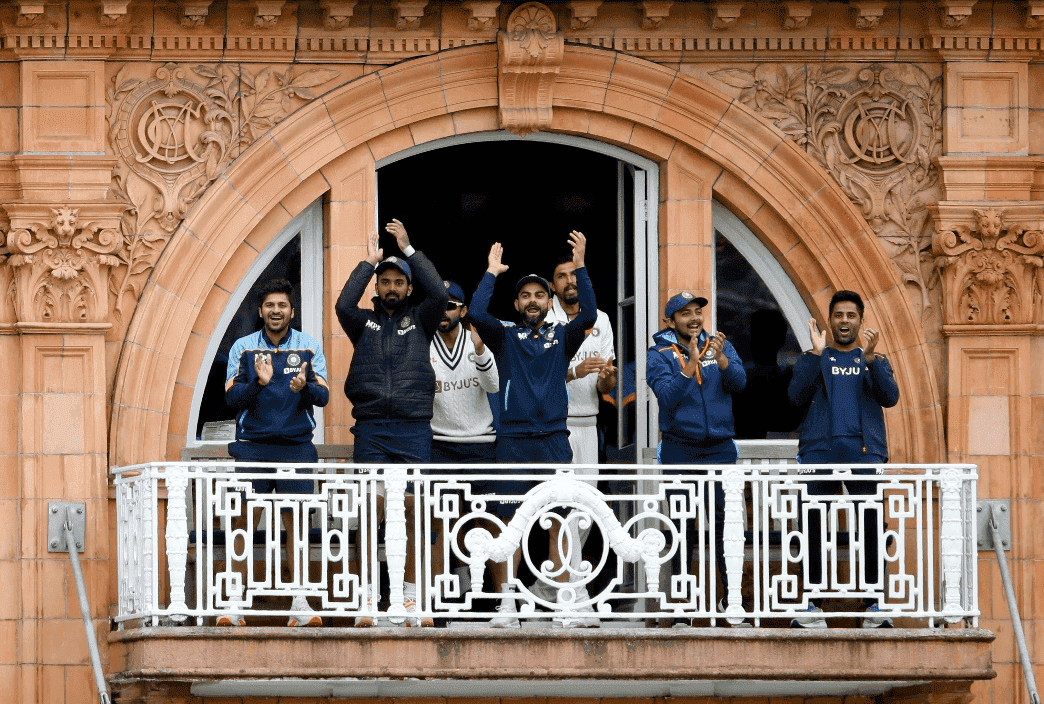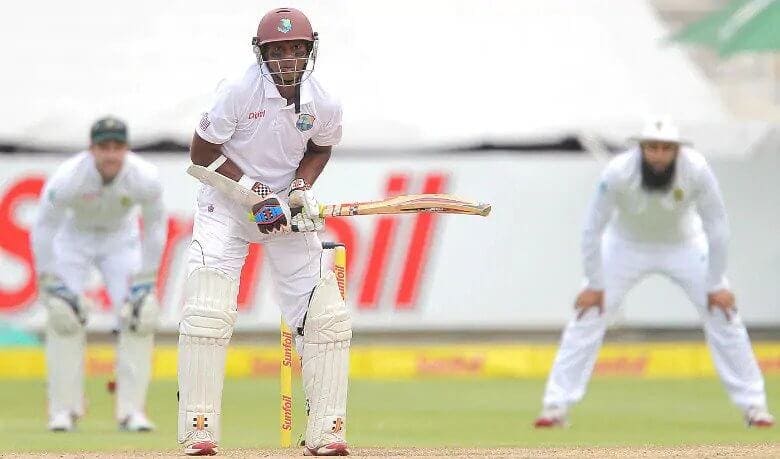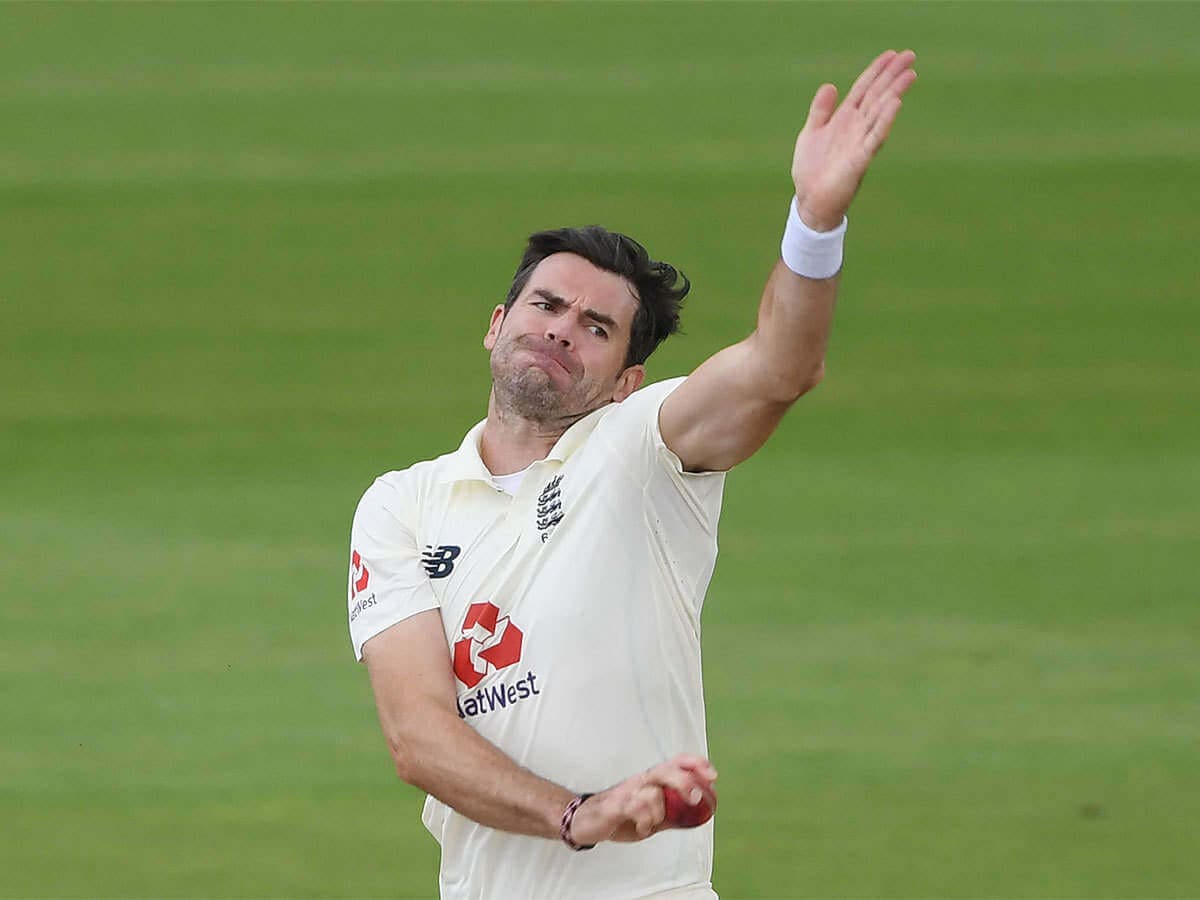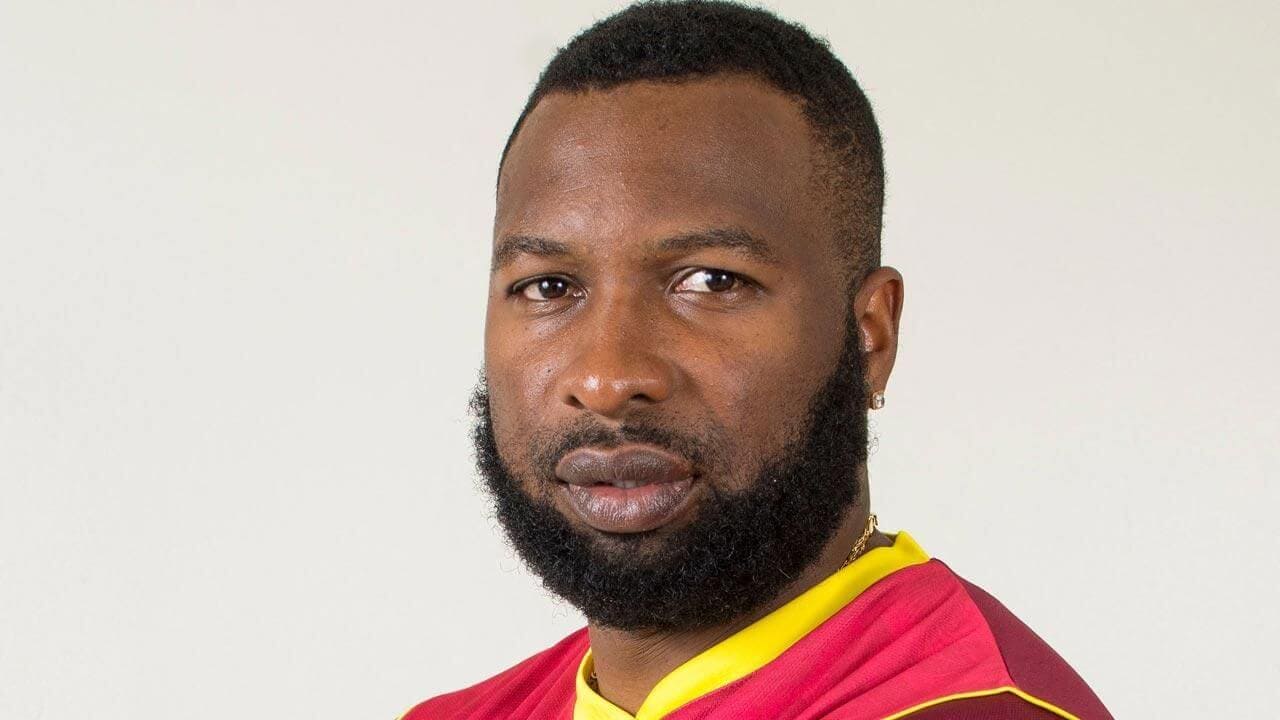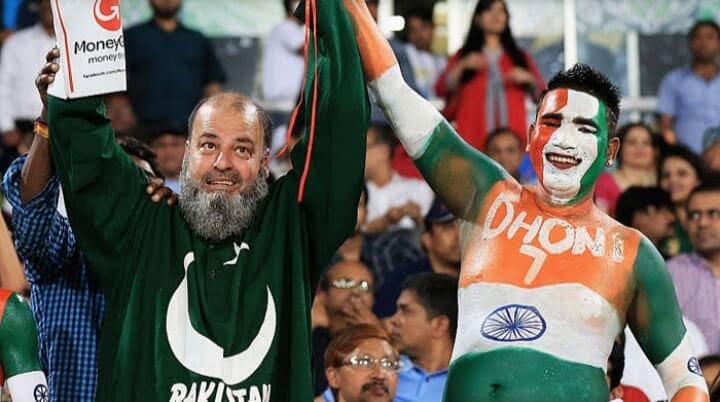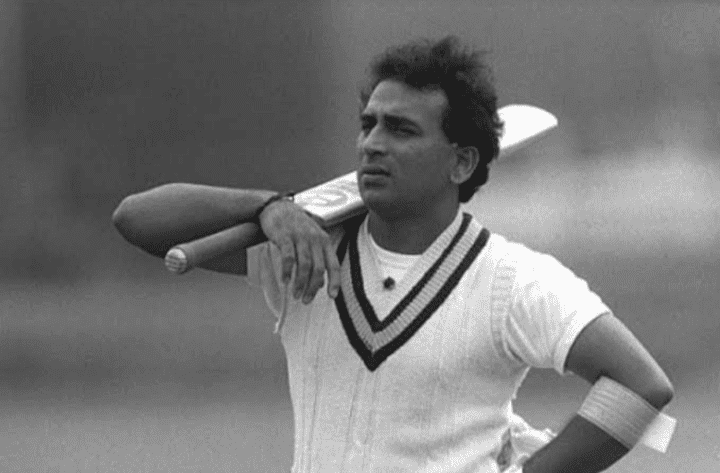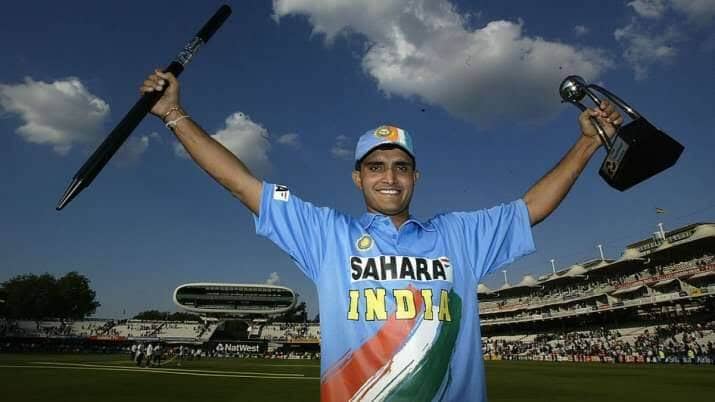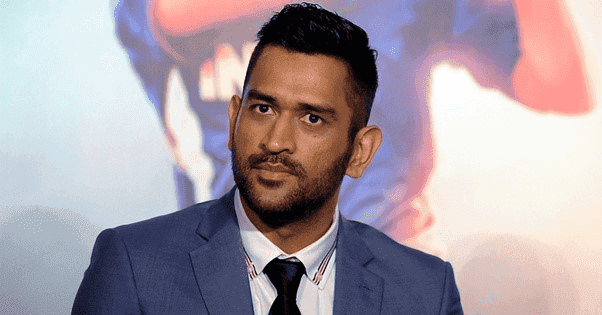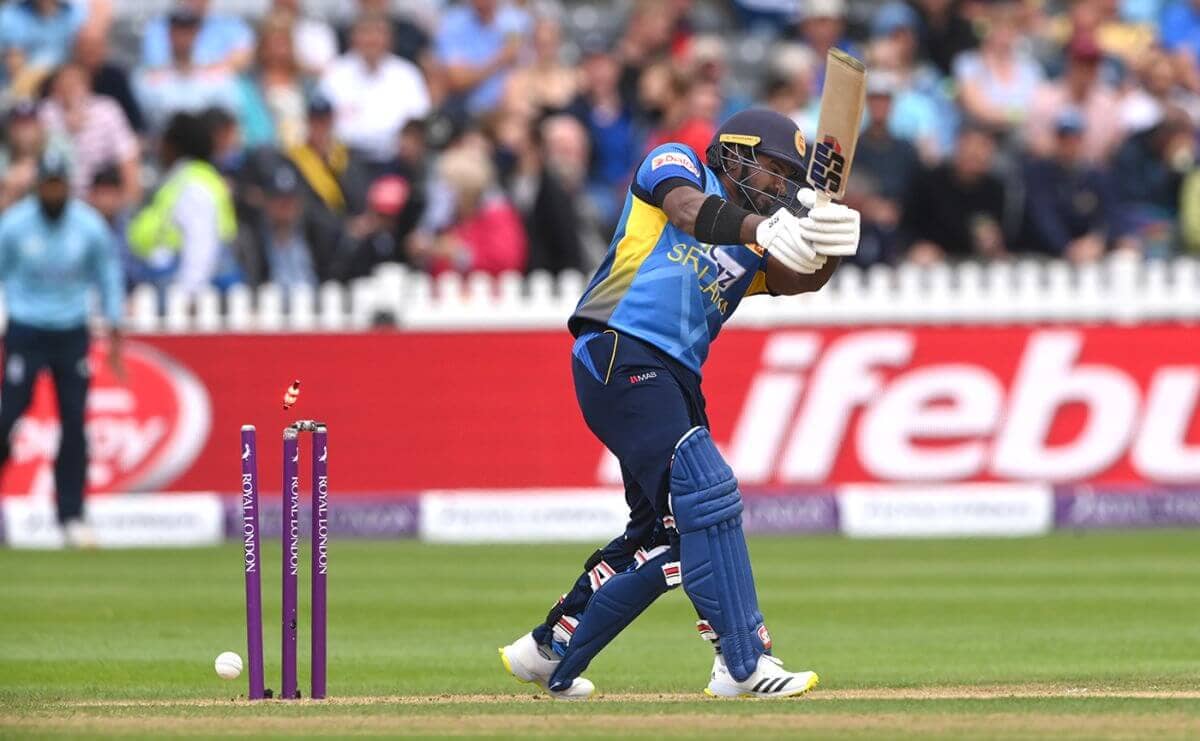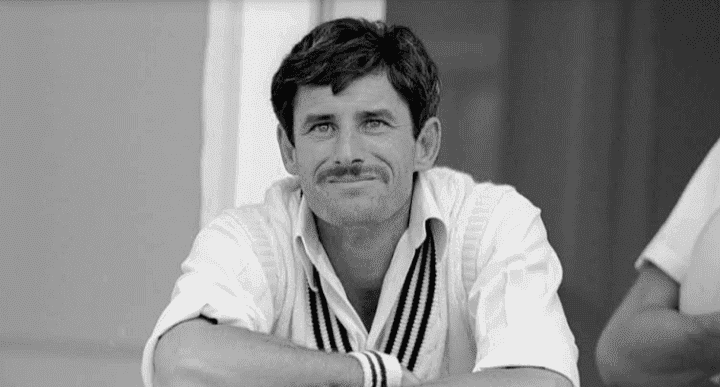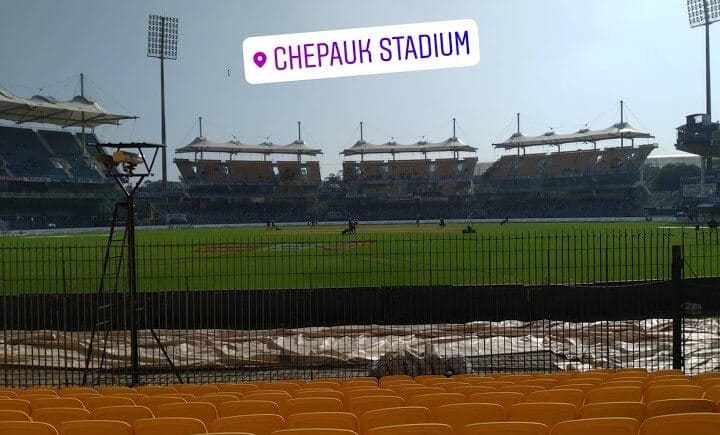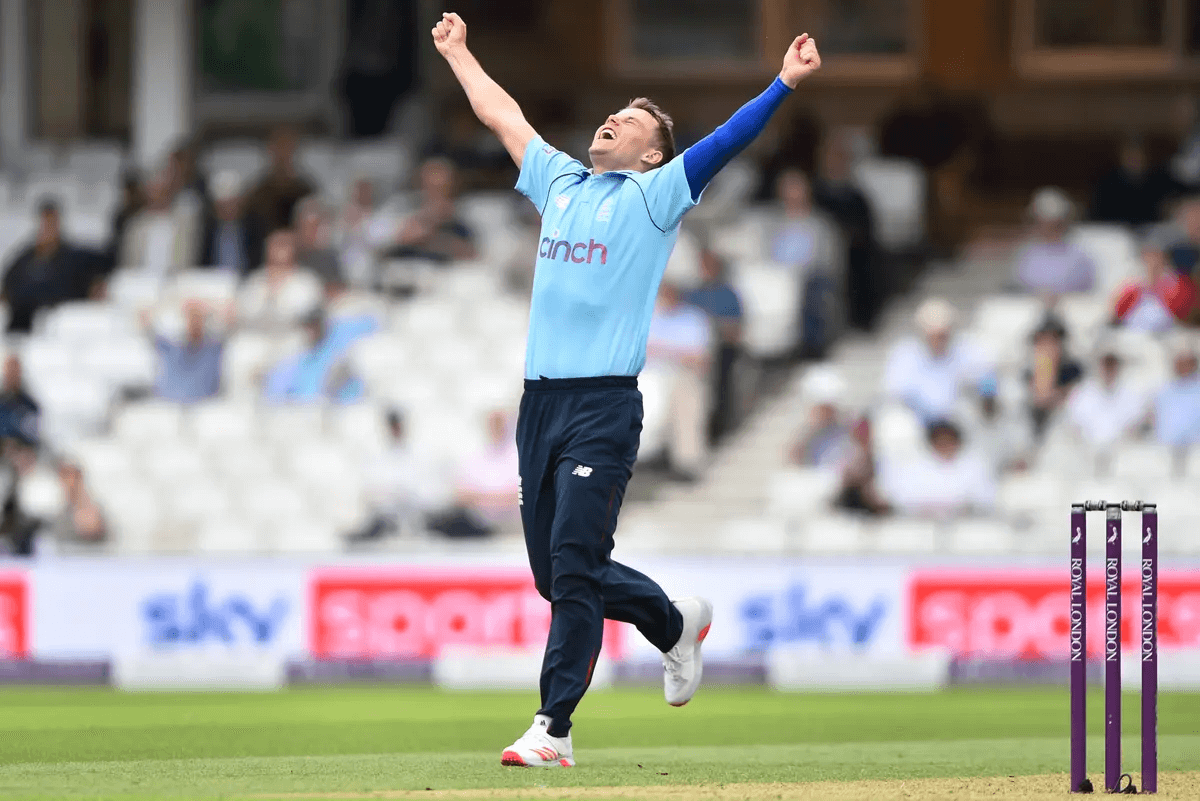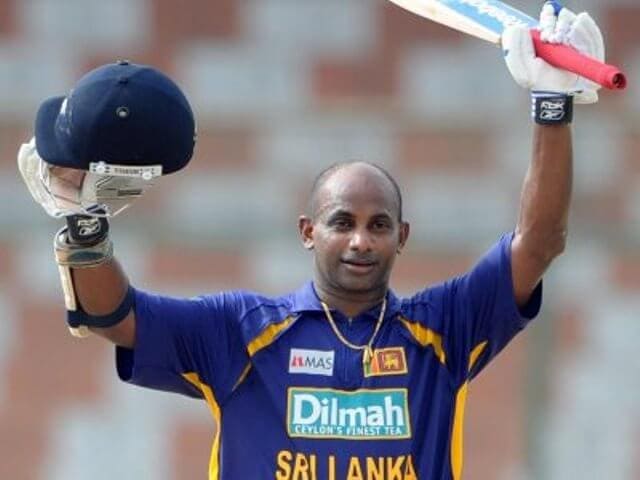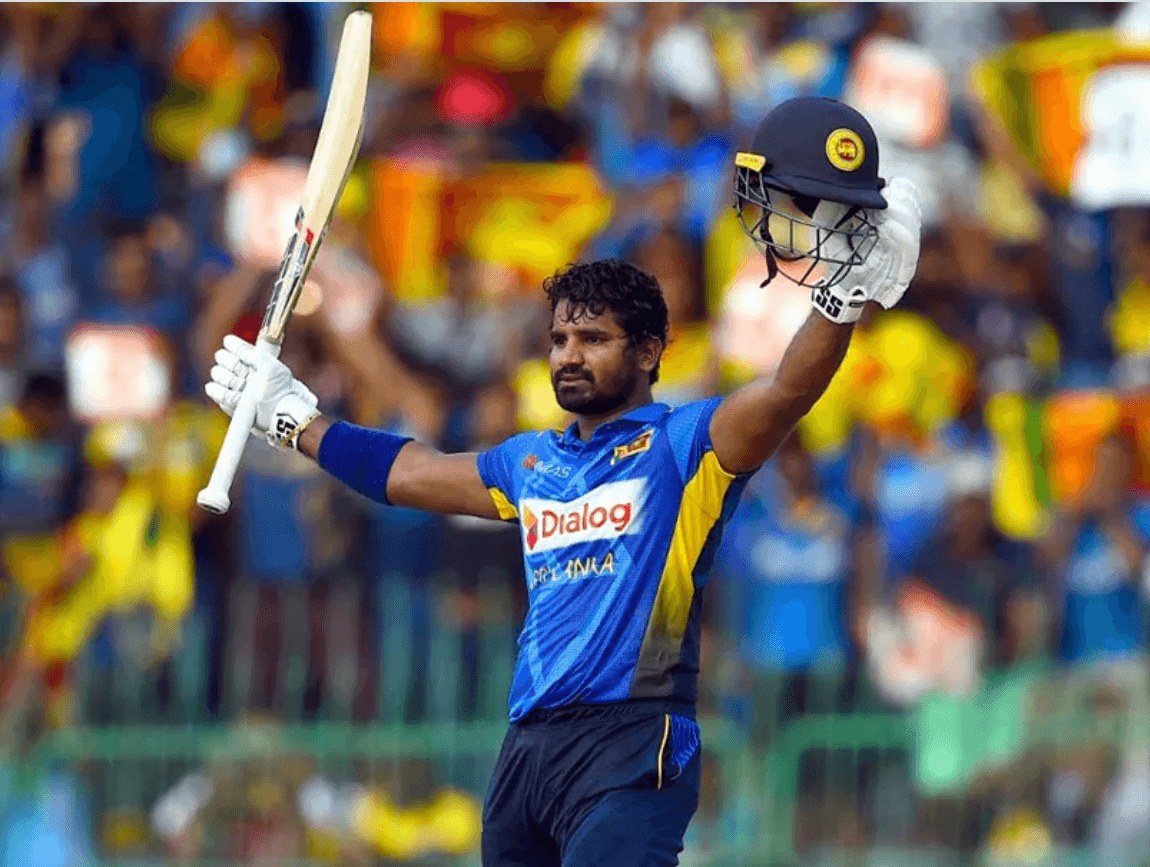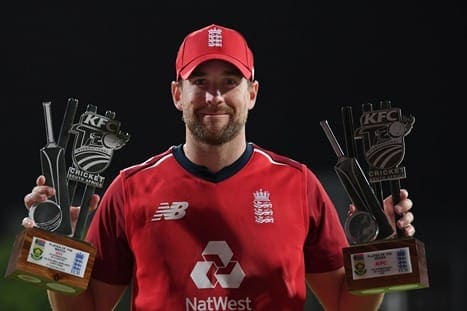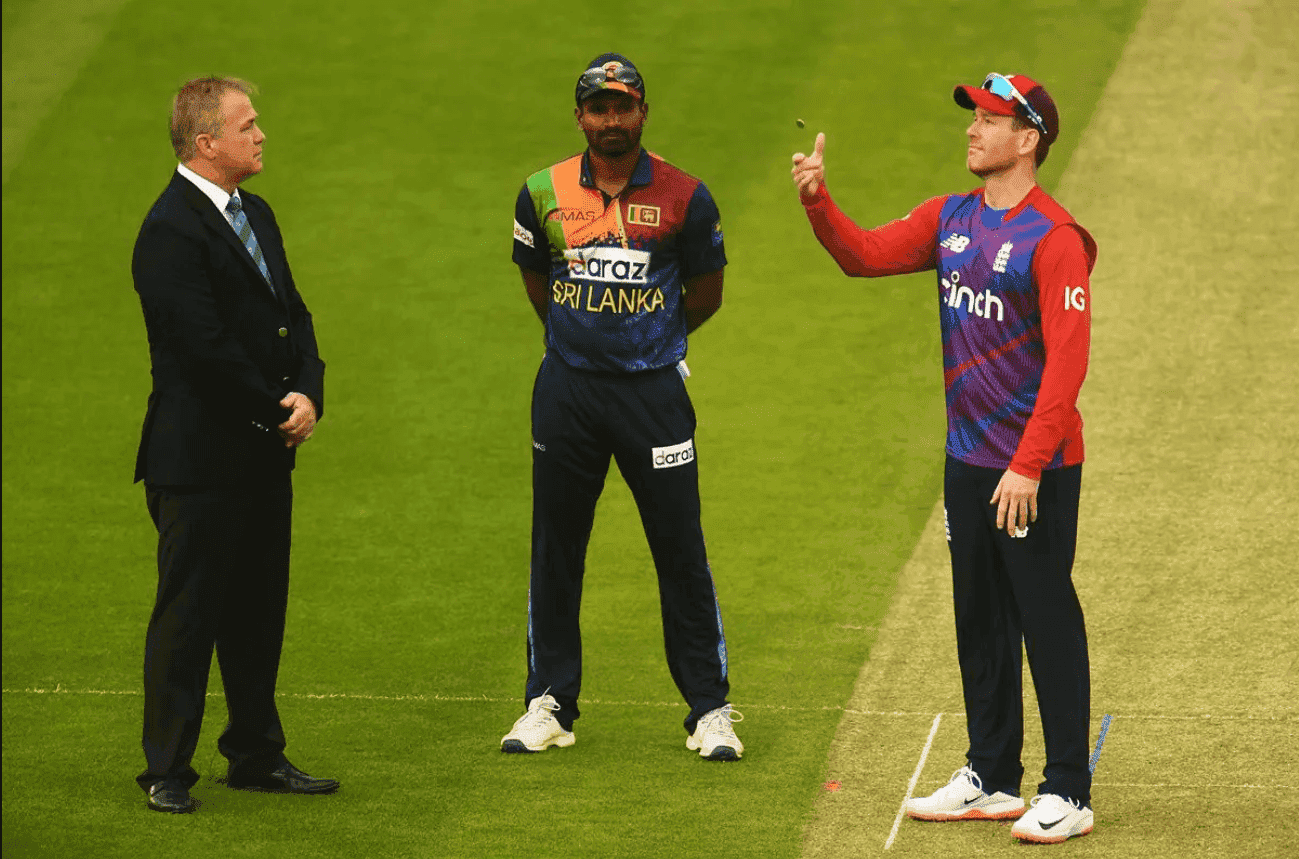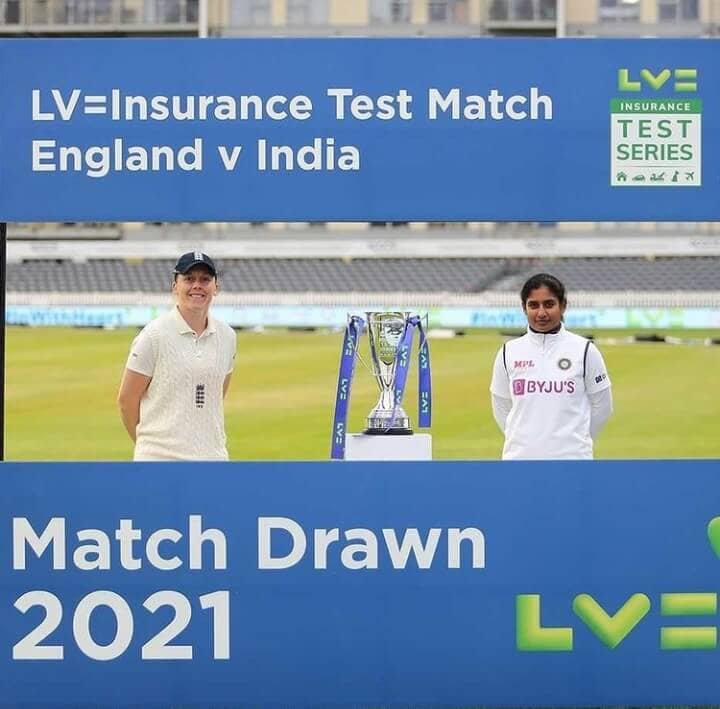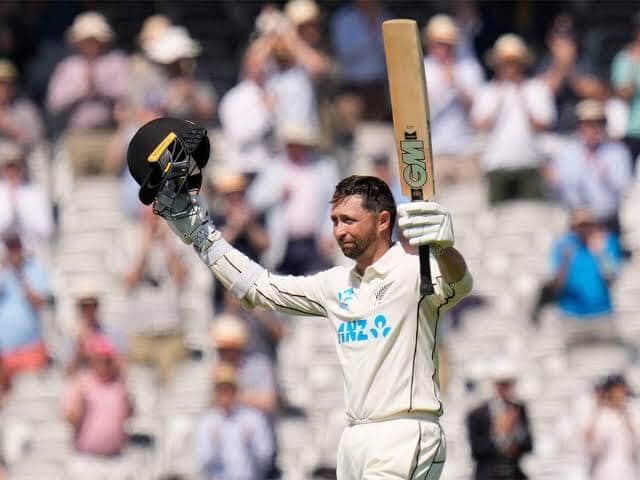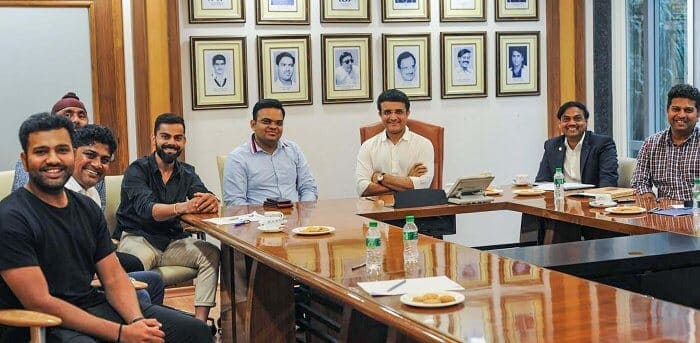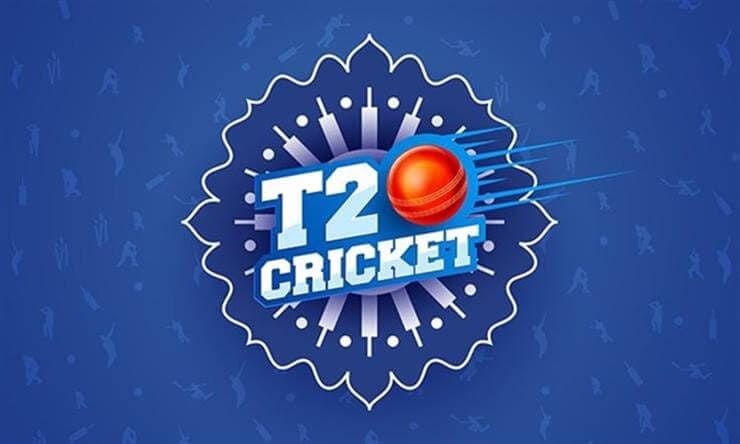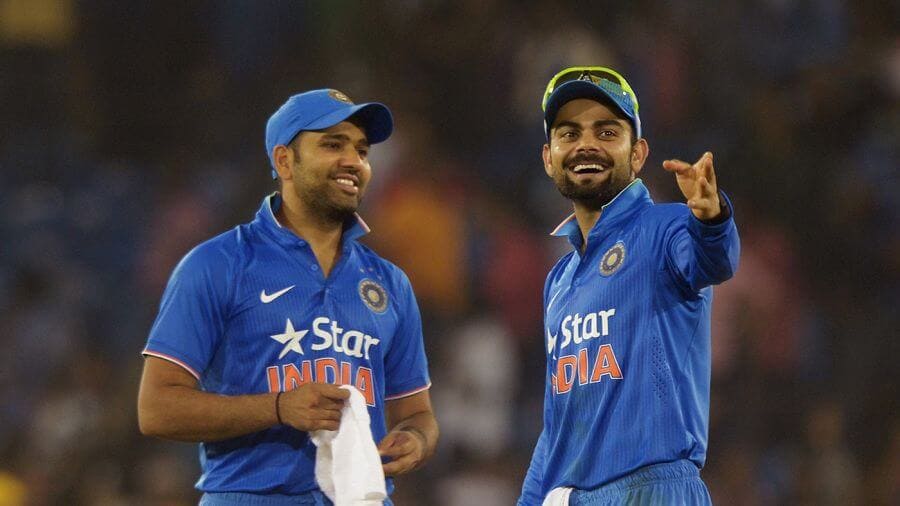
Dark clouds gleamed above the arena, rain gods were within the perimeter. Perhaps they too had come to witness one of the biggest spectacles of the cricketing world. It was India vs Pakistan, one of the marquee events of any calendar year. 90,000 fans had gathered in the 2nd largest cricket stadium in the world, 60,000 of them being Indians. 60,000! These 60,000 people are representative of the 140 crore Indians all over the world. They are a representative of the cultural impact cricket has had on India throughout its history, a representative of the bag of love and national admiration that Indian cricketers carry with them into the field, along with the burden of expectations of a whole nation.
India won the toss and chose to field. After a horrible start, Pakistan regained composure at the death to post a competitive total of 159.
The stage was set for an epic clash with fans from both sides anticipating a nail-biting finish, one that hasn't been seen in an Indo-Pak match in ICC events for ages.
2nd over: Naseem Shah bowls it short of a length. The ball bounces lower than expected. Rahul being in two minds isn't able to play a decisive shot. The ball takes the inside edge and BOOM, India: 7 for 1.
4th over: Haris Rauf, one of the top performers in T20Is this year, delivers a beauty to entrap the Indian Captain. India:10 for 2.
Soon the no.1 T20 batsman at the moment in ICC rankings Suryakumar Yadav followed the openers, India: 29 for 3.
Axar who found himself in an unfamiliar batting position too departed after a misjudgment while running. India: 31 for 4.
For all these instances barring the 1st wicket, Virat Kohli was at the other end. India's innings till that point were analogous to Virat's performances from the past year. The batsman who was averaging around 55 in Tests by the end of 2019, now had his average drop below 50 for the first time since 2017. The man who was coined the 'Bradman of ODIs' in 2019 by Ian Chappell, had scored a mere 304 runs in this format since 2021, at an uncharacteristic average of 27.64. This terrible form in the two longer formats seemed to affect Virat in the shorter format too. Virat's combined record across the 2021 and 2022 IPL seasons is 746 runs at an average of 25.72 with an all-time career low strike rate of 118. T20 internationals seemed to be the only place where Virat was at his best, with him showcasing moments of brilliance in the recently concluded Asia Cup and home series, but he was nowhere close to the consistency we were so used to from him. Barring the #71 innings, Virat's numbers for the 2022 calendar year in T20Is were 363 runs from 13 games at an average of 33 and a strike rate of 126.5.
Under such circumstances, even the most hardcore Kohli fans were questioning their hero. Cricket analysts were on the front foot, some deeming Virat a liability for the team, whereas some were questioning his place on the side. The once undisputed King of the Game appeared to fall behind in the race for the best, with younger compatriots elevating their own game.
Thus we had one of the Greatest Cricketers of all time, in the middle of the pitch with a scary amount of pace and bounce, in front of a packed Melbourne Cricket Ground, against a world-class Pakistani attack, unbelievably having everything there is to prove to the World. What happened next? Through an innings that is best described by Greg Chappell as A Song of God, Virat showed the whole world why he is revered by so many people across the globe.
In the Indian innings, the first 39 balls were analogous to Virat's past couple of years, but on whole, it was analogous to Virat's cricketing career.
The going wasn't easy.
For the first 21 balls, Virat struggled to score quickly, managing 12 runs without any boundaries. Except for the first few balls, Virat seemed to be in control but wasn't able to find the gaps and in the deliveries where the ball pierced the fielders, it stopped rolling just before the boundary line. Virat's early life and professional career were similar to this. Born into a Punjabi household, his father Prem Kohli was a criminal lawyer, and his mother was a homemaker. By all accounts, one can conclude Virat had a stable childhood, with him often recollecting fond memories of that period of his life, in various interviews. He would start his journey in cricket through West Delhi Cricket Academy and would consistently rise through the ranks in the upcoming years. Virat would go on to bring success for both Delhi and the U19 Indian cricket team, winning the 2008 U19 World Cup as captain. However, these early years weren't a bed scattered with roses.
Virat was always among the runs but found it tough to break into the national side, the main cause being the strength of the then-Indian batting line-up. Virat wasn't able to repay the faith that RCB had shown in him, scoring 409 runs for his first two seasons, at an average of 18.59 with a strike rate of 108. Along with his steep rise in cricket, Virat suffered a personal blow, losing his father in December 2006.
Virat didn't allow these early setbacks to derail him from his track to glory. Virat would put in the extra yard on the field, endeavoring to improvise his game and more importantly, his physical fitness.
"I saw myself, I was disgusted and I wanted to change myself and also to do with the fact that I saw how the dynamics of cricket around the world were changing rapidly. I felt we were far behind in terms of being at the same intensity level as other teams, they were moving far ahead of us in terms of fitness levels"
-Virat looking back at his situation after IPL 2012
So working hard is what he did. He had a phenomenal tour of Australia earlier that year, and he carried this good form into the subsequent series, cementing his place in the side. He worked on his power game and the ability to accelerate his scoring rate, and this was evident in his international white ball numbers of that year with strike rates of 133 and 93 in T20Is and ODIs, respectively.
Virat exhibited this very hard-working nature of his in the innings. With Pakistani fielders drying off the supply of 4s and 6s, Virat turned to his old friends, the 1s and the 2s. With an able runner Hardik on the other end, Virat scored his first 15 runs, all through singles, doubles, and even triples. He maintained his composure and backed himself to make up for the lack of boundaries. Self-belief is an attribute one can use while writing the character sketch of Virat Kohli.
Virat got the opportunity to captain the Indian Test side for the first time in the Australian tour of 2014/15. Let's go through Virat's scores in the Test series prior to this match:
1
8
25
0
39
28
0
7
6
20
A test series that started in a merry way, ended in yet another overseas dejection for the Indian team, with Virat finding himself at the center of all the attention. Kohli would describe himself as the "loneliest guy in the world" and would find himself battling against depression throughout the tour.
Under such circumstances, Kohli would lead the Indian side into battle against the mighty Australians at the Adelaide Oval. On the back of Smith's 162, Australia would demolish the Indian bowling line-up piling on 517 runs across two days.
On a good batting deck, Virat would find himself in the middle of the pitch, at 111/2, waiting for Mitchell Johnson to complete his run-up. Mitchell Johnson, the same bowler who at this time the previous year, was tormenting the English side, the same English side who gave sleepless nights to Kohli a few months ago. With over 40,000 Australians in the ground, a fiery pace attack, and the team trailing by over 400 runs, Virat found himself in front of an enormous mountain. So what happened next? Virat scaled the mountain with the blade of his bat. 115 runs against a top-quality pace attack and Nathon Lyon, Virat seemed to put the memories of the recently concluded English Tour, all behind him. On the back of Virat's phenomenal knock and 50s from Pujara, Rahane, and Vijay, India put up a fighting total, but it was never going to be enough against the Australians. Warner's twin centuries would propel the Australians to a grand lead of 358 runs by the end of day 4.
A 359-run chase on the last day of the match against one of the top 2 bowling sides in the world along with captaining the team for the first time, one would be convinced for putting 100% of his efforts into digging out a draw, everyone but Virat. In an innings that established the temperament for Indian Test cricket for the future, Virat played the innings of his life(till that moment). He and Murali Vijay seemed to bat on a completely different pitch compared to the other Indian batsmen. Kohli would smash all the Australian bowlers for fun, smashing his second century of the match, a 175 ball 141, at an outrageous strike rate of 80.57. A strike rate of 80.57 while requiring over 300 runs in the last day of the match, with 8 wickets in hand. This can only be the act of a person who backs himself against anything the World can throw at him. Unfortunately, Team India wouldn't be able to cross the line as the lower order faltered away after Virat's wicket, India losing the test by 48 runs. Dhoni would make a return to the side in the next match and things would return back to normal for the Indian team, however, only for a few weeks. Ahead of the 4th test match, Dhoni would announce his retirement from Tests, a decision that no one had anticipated. Virat Kohli at the age of 26, would be announced as the permanent captain of the Indian Test Team.
So here was Virat, having risen from death like Jesus, captaining his side. A side that languished at number 7 in the ICC rankings, a side that had last won an away series 4 years back against the weakest West Indian side of all time, a side with a bowling attack that averaged 43 for the last five years in away tests. So what happened next? The Indian team went on to become the best side in the world, with the 2nd best being far far away.
In 68 matches as captain, Virat would lead India to 40 victories, acquiring the 4th-best win percentage as a captain. Leave alone the thought of losing a home series, India only lost 2 home matches under Kohli. India became the first Asian side to win a series in Australia and pushed South Africa and England right to the edge. The bowling attack which averaged over 43 in away tests, now averaged 27.27, being the major contributor to India's away success.
Back to the game. India now required 48 of 18. Shaheen Shah Afridi and Haris Rauf, two of the premier fast bowlers of the format were looking all set to finish off the game. Their exploits in the last Indo-Pak World Cup game were still fresh in the minds of Indian fans. The floodlights were on and Virat found himself under the spotlight for the nth time.
Thus there he was the greatest batsman of T20Is, arguably the greatest batsman of all time, carrying the expectations of a billion smiles. There he was, the chase master, looking to steal a single through the cover. There he was, the run machine, looking to score a few more runs over the side screen. There he was, the King, whose character is full of zing. There he was, a husband and a father, who knew if he had failed, his family's next few days would get a lot harder. There he was, Virat Kohli.
So what happened next?
Doesn't need to be mentioned.

